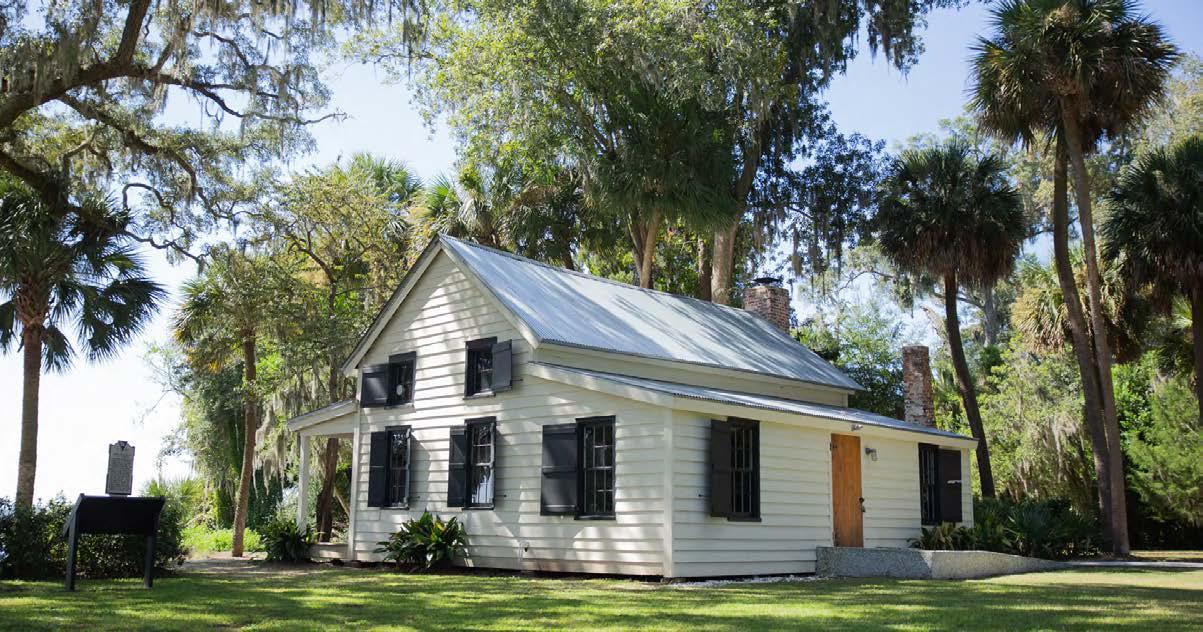
2 minute read
Step Back in Time/History
HOUSING
Bluffton’s HISTORY
Advertisement
Garvin-Garvey House
Homes, churches, and businesses once part of daily life now preserve stories of the past.
By Linda Lanier
One of Bluffton’s many pleasant features is its walkability. Taking a stroll down its centuries-old streets in the area known as Old Town Bluffton is an enjoyable way to experience the gentle allure of the Lowcountry. Boutiques, restaurants, and galleries stand side by side with demure cottages and genteel homes, many dating to the early 1800s.
The entire one-square-mile historic district of this charming river village is listed on the National Register of Historic Places. The district includes two original shops, 20 houses, two churches, and an oyster-shucking factory.
Before the Civil War, Bluffton became a popular summer haven known for its cool river breezes. In the center of Old Town, Calhoun Street is lined with historic cottages, homes, and shops: Seven Oaks, Squire Pope’s Carriage House, AllenLockwood House, Graves House, Fripp-Lowden House, The Peeples Store, Carson Cottage, Patz Brothers House, and Planters Mercantile.
Heyward House Museum &
Welcome Center on Boundary Street was constructed in the Carolina farmhouse style by enslaved people in 1841. Today it serves as the town’s welcome center.
During the Civil War, Union forces burned Bluffton in June 1863. About 60 structures stood in town before the fire. After the dust settled, 15 remained. Two surviving churches have become well-known landmarks: Campbell Chapel African Methodist Episcopal Church, built in 1853, and on the banks of the May River, the Anglican Church of the Cross, circa 1857.
The Huger-Gordon House, one of the oldest houses in Bluffton, sits on Water Street with a breathtaking view of the May River and still serves as a family home. One section of the house dates to 1795. Although the house survived the Union burning in 1863, scars around the front door show where it was shelled with minié balls during the scuffle.
The Card House on Bridge Street was built about 1825. According to local folklore, it changed hands in a late-night poker game, which became its namesake.
The Garvin-Garvey House, perched on the river bluff, was the first home owned and built by a freedman’s family. Today it is open to visitors as an interpretive center.
A stone’s throw down Wharf Street, Bluffton Oyster Factory Park recognizes the importance of the seafood industry to the culture of Bluffton. Its location on the May River makes a picturesque backdrop for town events, as well as personal celebrations, such as weddings and family reunions.










